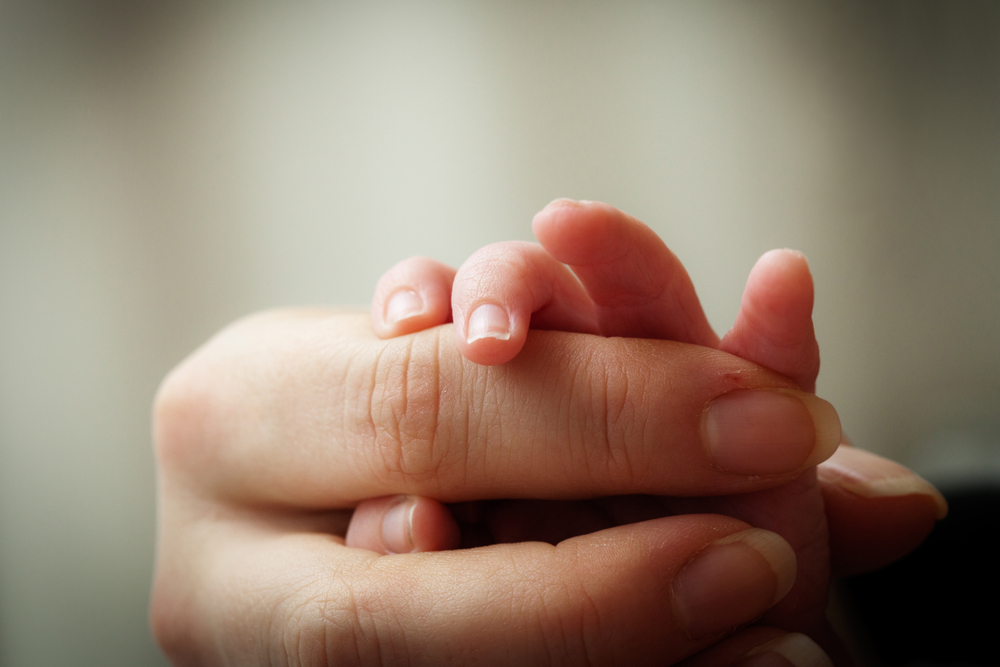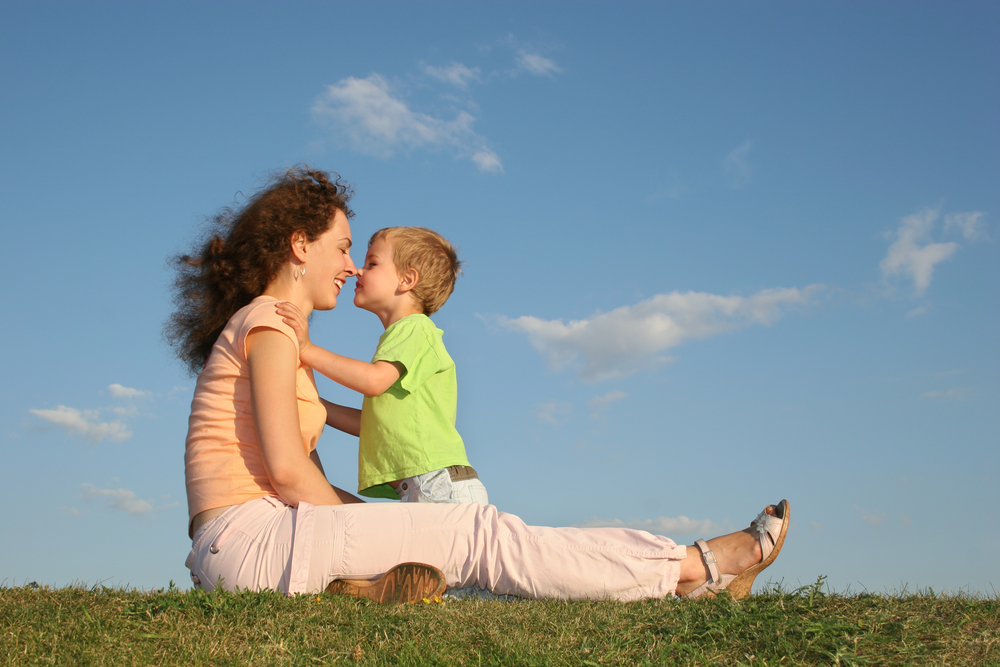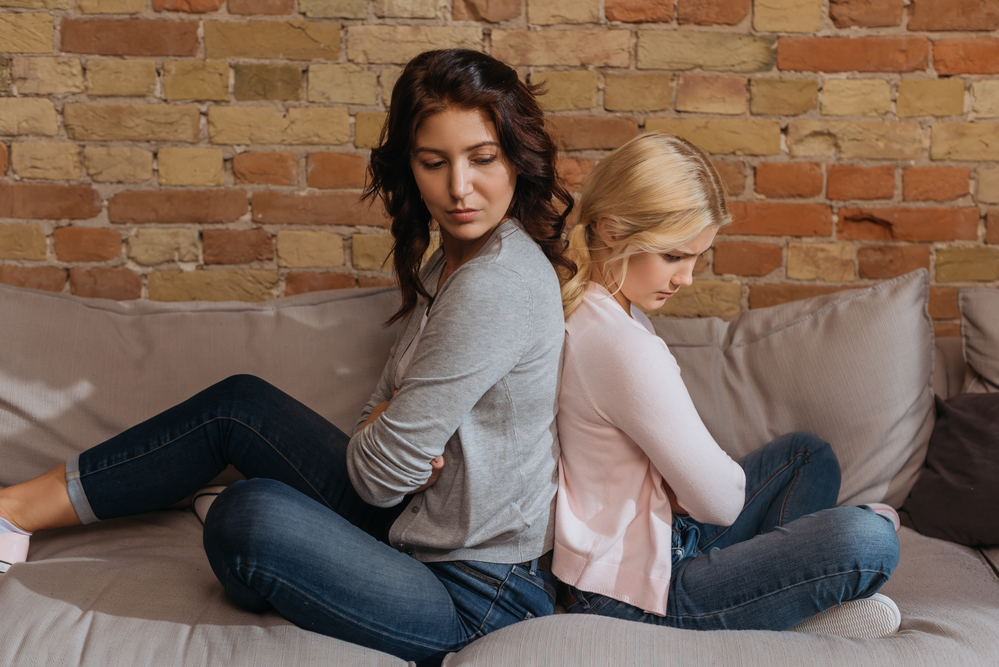Using your Attachment Style to Understand your Intimate Relationships
Aug 21, 2021
Do you feel like you’re constantly failing in your intimate relationships?
Is every person you date practically the same human in a different body?
Do you notice that you beat yourself up over not being “better” at choosing partners?
Let me just start off by saying… You’re not alone.
And especially if you’re a woman with past trauma, this could be a game-changer for you to learn about your attachment style.
I know it was for me.
Because for almost two years, I was in a horrible relationship.
My friends and family told me to leave. But I just couldn’t.
There was something about the relationship that kept me sticking around.
And then I realized what it was…
Can you guess what it is?
Yep… My attachment style.
And if you're not sure what an attachment style is, don't worry. I'm going to cover all of that for you.
But the bottom line is...
Our attachment style can tell us a lot about ourselves and how we show up in our intimate relationships.
And especially if you have a history of childhood trauma, read on.
Because learning your attachment style will change everything for you.
In this blog post, I’m going to tell you about the 4 different attachment styles and how they show up in our intimate relationships.
What are attachment styles and why are they important?
Attachment styles are the ways that we navigate relationships and relate to other people.
Why is this important to know for relationships, you ask?
Well, a few reasons.
First, our attachment style gives us clues into how we show up in our intimate relationships. It tells us things like:
- How capable we are giving and receiving love
- The ways we express our needs in relationships
- How much or little we trust our partners
- Whether we generally feel safe or unsafe in relationships
It basically tells us about our blueprint for how we navigate feeling vulnerable or intimate with other people.
And our attachment style with intimate partners ultimately stems from the relationship we had with our primary caregivers as children.
Childhood and attachment styles
Childhood is an incredibly important time in life to create a safe, nurturing, and loving relationship with our caregiver.
The way that we connect (or fail to connect) with our primary caregiver shapes how we understand relationships as we get older.
As children, we are biologically wired to need love, connection, safety, and stability. And depending on how attuned our caregivers were to our needs, those parts of ourselves become either “strengthened” or “weakened”.
Here’s a quick overview of how this all works.
As children, we rely entirely on our caregivers.
Feeding us, giving us a safe place to sleep, sheltering us, keeping us warm, picking up on our needs and giving us the things we need…
We literally need all of these things for our survival!
And the person who primarily gives those things to us is our caregiver.
When we have a secure attachment with our adult caregiver, we feel safe, connected, loved, supported, and nurtured. This happens when the caregiver bonds with the child in a way that makes the child feel like a human being.
In other words, the child learns from a young age that they matter. They feel safe to explore the world and they know that they can return home to get the safety and love they need.
On the other hand, when parents are less emotionally attuned, our sense of security, love, and safety feels threatened. This can happen when a caregiver is inconsistent with how they give love and support. An example of this might be a parent who is self-involved or who struggles with mental illness and/or addiction.
In cases where the child isn’t put first, the biological need for connection, love, safety, and stability feels threatened.
In other words, the child doesn’t necessarily feel like they matter.
This understanding of feeling loved, safe, and supported (or unloved, unsafe, and unsupported), becomes imprinted into our DNA.
And when we get older, these attachment styles are carried into our adult relationships with intimate partners.
Here’s how some of them may show up for you in your intimate relationships as adults.

Anxious attachment style
A child with an anxious attachment style has most likely experienced a relationship with a caregiver that was unstable and inconsistent.
The child, on some level, felt unloved, rejected, and unwanted. She anxiously craved the caregivers’ attention but did not receive that attention in a way that made her feel secure, validated, and accepted.
So as this child grows up, she continues to feel insecure, invalidated, and unworthy of love as she gets older.
It’s typical for individuals with anxious attachment styles to worry a lot about their relationships. They may feel insecure in their relationships and need a lot of reassurance by their partner that they’re loved.
They’re constantly wondering whether their partner truly cares about them and loves them. And they are often preoccupied with thoughts about the state of their relationship. And they will do anything they can to get the love they need.
The bottom line is… anxious attachment styles assume that their partner is going to leave, abandon, or reject them. So they live in constant fear around that story.
Here are some common traits of anxious attachment:
- Difficulty trusting others
- Fears that your partner will leave
- Needing constant reassurance in the relationship
- Being hyper-aware of partner’s words and emotions
- Easily influenced by partner’s mood
- Lack of independence
- Low self-worth, feeling unlovable
- Lots of insecurities that get in the way of the relationship
How do anxious attachment styles show up in a relationship?
Here’s an example of how this may show up in your intimate relationship…
Imagine that your partner is out for the night with friends. You text him, but he doesn’t text you back. How do you respond? What is going through your mind?
Perhaps one of the thoughts going through your mind is:
- He’s probably with someone else right now
- He’s talking with another girl
- I just know that he’s going to leave me. I can feel it.
And then your mind starts going down the rabbit hole of fear and thoughts of abandonment.
We start to get incredibly jealous, angry, and resentful of these stories we are telling ourselves about what he may be doing at that party without us.
And it’s easy for our thoughts to spin out of control. We may start to make assumptions about our partner not being a good person, that they’re purposely trying to hurt us, that they are not the person we thought they were… And on and on and on it goes.
Sound familiar?
The fear, the hurt, and the feeling of rejection that we feel (even though it may not be an accurate representation) leaves us in a state of constant anxiety about the relationship.
We want to protect that part of ourselves that feels unworthy, insecurity, and untrusting of a healthy, loving relationship.
Now imagine that your partner comes home from the party.
And since we have been mulling it over in our brain for the last three hours that they are a terrible, untrustworthy person who is going to leave us… We are ready for a fight.
This can lead to sabotaging relationships due to our own fear of being abandoned. And the partner can feel really confused about what they did wrong and feeling confused.

Secure attachment style
This attachment style is developed when we feel loved, protected, supported, and nurtured by our parents as children. Overall, our caregivers showed up for us and consistently made us feel like we mattered.
People with secure attachment learned from a young age that it was safe to get close to others, to accept and give love, and to share their emotions vulnerably without getting shut down or rejected.
Relationships come much more easily to people with secure attachment compared to those with anxious or avoidant attachment.
- They are secure and confident in themselves
- They are generally trusting and assume their partners have good intentions
- It’s easy for them to open up, let others in, and be vulnerable with their partners.
- They feel open and able to communicate their needs without much difficulty.
In other words, it’s easy for people with secure attachment to give and receive love. They don’t get triggered as often as individuals with anxious or avoidant attachment styles. And they don’t constantly expect the worst to happen in their relationships.
How do secure attachment styles show up in relationships?
To put this into perspective, let’s imagine again that your partner goes out with friends for the night.
Only this time, instead of an anxious attachment style, you have a secure attachment style.
Chances are… if you have a secure attachment style, your night looked something like this:
You kissed your partner goodbye, told them to have fun, and made your own plans.
You are not preoccupied with what he might be doing while he’s out.
You aren’t worried, deep down, that they are finding someone else and are going to leave you.
Overall, you feel safe in the relationship. And it feels okay for your partner to go do things without you because you are trusting of him.
You feel secure in the relationship. And you know that you can trust and rely on your partner to treat you with respect, even when he’s not around.
Ideally, we all want to have a secure attachment style in relationships. Having secure attachment helps us feel close to others and helps others feel safe getting close to us.
When we have secure attachment styles, we have better intimate relationships, we feel safe opening up, we practice giving and receiving love, and we feel like we can trust our partners.

Avoidant attachment style
Adults with avoidant attachment styles did not have the loving, nurturing, supportive relationships they needed with their primary caregiver as children.
They learned, from an early age, that their needs would not be met. Their emotions weren’t met with acceptance or loving support. And their needs and desires were not met with sensitivity. In fact, their needs may have been completely ignored or rejected all around.
This causes the child to grow up with the strong belief that her needs don’t matter. Her emotions are not supported and she feels like she can’t rely on others to keep her safe.
As avoidant attachment styles grow up into adults, they carry those beliefs that they will not be accepted, safe, and loved into their relationships. And it can interfere with the person’s ability to have safe, nurturing conversations with a partner since they never learned how to do so as a child.
Many people with avoidant personality prefer being alone and would rather not go to the trouble of trying to make a relationship work.
The avoidant feels pressured and overwhelmed by the idea of having relationships. When someone gets too close, they back away. Depending on the communication skills of this person, they may end the relationship verbally, or they may completely disappear from the relationship all together with no explanation--otherwise known as “ghosting”.
When a partner opens up to them about their emotions or expresses their needs, this person may begin to feel like they’re being controlled by the other. So they back off in hopes that they’ll hold onto their independence.
They can feel like they’re being trapped into intimacy with another person.
People with avoidant attachment styles need a lot of space and often feel overwhelmed easily in the relationship. This can lead to them having hot and cold behaviors or talking their way out of a relationship when things get too emotional or vulnerable.
Here are some traits for avoidant attachment styles:
- Difficulty getting in tune with and expressing emotions
- Fears feeling trapped in relationships
- Easily overwhelmed by relationships
- Accuses partner of being clingy or overly emotional
- Discomfort with physical or emotional intimacy
- “Doesn’t do” vulnerability
- Leaves the relationship when things get too serious
How does avoidant attachment show up in intimate relationships?
Let’s say you have an avoidant attachment style and your partner tells you that they are going to spend a night out with their friends.
Instead of becoming anxious and worried about what your partner is doing (anxious attachment), or trusting that your partner will come home to you later (secure attachment), you’d behave a little differently.
You may feel completely disinterested in what your partner is doing. In fact, you may even find some relief that they’re going out without you, providing a break from the relationship and all of the emotions that come with it. You enjoy having your space from vulnerability.
On the other hand, you may text your partner and tell them you miss them while they’re out. But when they return home and try to tell you about their night, you become distant again
For our partners, this emotional back-and-forth can feel confusing.

Anxious-Avoidant Attachment Styles
Now, we’ve arrived at the last of the four attachment styles: the anxious-avoidant style.
Can you guess at what an anxious-avoidant attachment is.
You guessed it.
It’s practically a combination of all of the traits for both the anxious and avoidant styles.
The anxious-avoidant attachment style can be the most complicated, because an anxious-avoidant person genuinely wants to be in a relationship, but they have a hard time keeping those relationships.
They feel anxious when they are separated from their partners because they generally have low self-esteem and feel like they cannot trust their partners. They feel unsafe in relationships, and they feel like they have to earn the love of their partner.
However, once their partner gets too emotionally close or starts expressing their needs, the anxious-avoidant will withdraw and pull back. Thinking about trying to make the relationship work can feel like too much to handle. So they will suddenly switch into the mindset that they’d “rather just be alone” than try to make the relationship work.
Someone with an anxious avoidant attachment style may be.
- Fearing that they will be abandoned in the relationship, followed by feeling like they’re trapped in the relationship
- Truly wanting an intimate relationship with someone but are also fearful that they will get rejected, hurt, or abandoned.
- Worrying that they are unworthy of love, or aren’t good enough.
- Coming up with excuses about why they should leave a relationship (such as finding faults in their partner)
- Feeling inadequate in relationships
- Looking for reasons to leave the relationship
- They may “shut down” suddenly
- Prefer casual sex over true intimacy
Here’s how an anxious-avoidant attachment style may show up in intimate relationships.
To put this into perspective, let’s revisit that party scene one more time...
Imagine you have an anxious-avoidant attachment style and your partner leaves to hang out with his friends for the night.
How do you respond?
First, you may get incredibly anxious about him being out. You fear that he will leave you, find someone else, or that you can’t trust him at a party. You start to wonder if he really is a horrible person after all, and you just haven’t known it yet.
However, once your partner comes home and tries to have a conversation with you, you lash out and push him away. You may feel overwhelmed and feel like your partner is lying to you. And you convince yourself that it’s better to just be alone than to navigate all of these emotions.
If you can’t tell, this is the most challenging attachment style to navigate.
The anxious-avoidant person is so strongly pulled in both directions (wanting a relationship while simultaneously finding reasons to leave the relationship). And this unpredictability can feel really confusing to both parties.
But all hope is not lost.
How can I learn more about my attachment style?
To learn more about your attachment style, it’s important to get down to the root cause of where your attachment style comes from in the first place. This means diving deep into the relationship you had with your parents (or whoever raised you) and uncovering the wounds that were left behind.
I understand that this can be a painful process. When I first started doing attachment style work, I felt incredibly angry, frustrated, and hurt. You’re not alone.
If you need support in this, you can reach out to me on Instagram or find a licensed professional who can help you come to terms with trauma from your childhood.
If you want to dive deeper into this and are ready to explore more how the relationship with your parents influences your intimate relationships, you can answer these journal prompts to get started:
Was your adult caregiver emotionally and physically available?
Were they more often present or away from the home?
Did they come in and out of your life unexpectedly?
What was it like when there was conflict in the house?
Were you often afraid you would be left or criticized?
Was your adult caregiver often drinking or abusing drugs?
These are a few of the questions you can ask yourself to start getting an idea about what kind of attachment style you had.

I know my attachment style… Now what?
So… depending on your attachment style, this can feel like a lot of information!
I get that. When I first learned I had an anxious attachment style, I felt doomed.
But the good news is that you can actually develop a secure attachment.
This is called “earned secure attachment”.
And with the right tools, you can shift out of feeling anxious and/or avoidant and move into a more secure attachment style that allows you to have the relationship you’ve always wanted.
If you’re ready to shift out of the dating pattern that leaves you feeling drained, hopeless, and unworthy of having love, I’m here for you!
Shifting Love is my 1:1 coaching program that will help you identify the areas where you feel like your past trauma holds you back in your intimate relationships.
Together, we will explore things like:
- Attachment styles
- Communication patterns
- Potential trauma responses that come up in your relationships
- Getting to the heart of why you find yourself in painful relationships over and over again
- And breaking out of old, painful patterns that keep you in bad relationships
If this sounds like something you’re ready for, book a free 30 minute call with me and we can chat about your next steps towards finding the love you desire!
Want to create healthy, safe, & loving intimate relationships after trauma?
Let's chat!
Take this Trauma-Informed Relationship Assessment!
Download the FREE Trauma-Informed Relationships Assessment to discover the 5 different areas that past trauma has impacted your intimate relationships.
We hate SPAM. We will never sell your information, for any reason.
